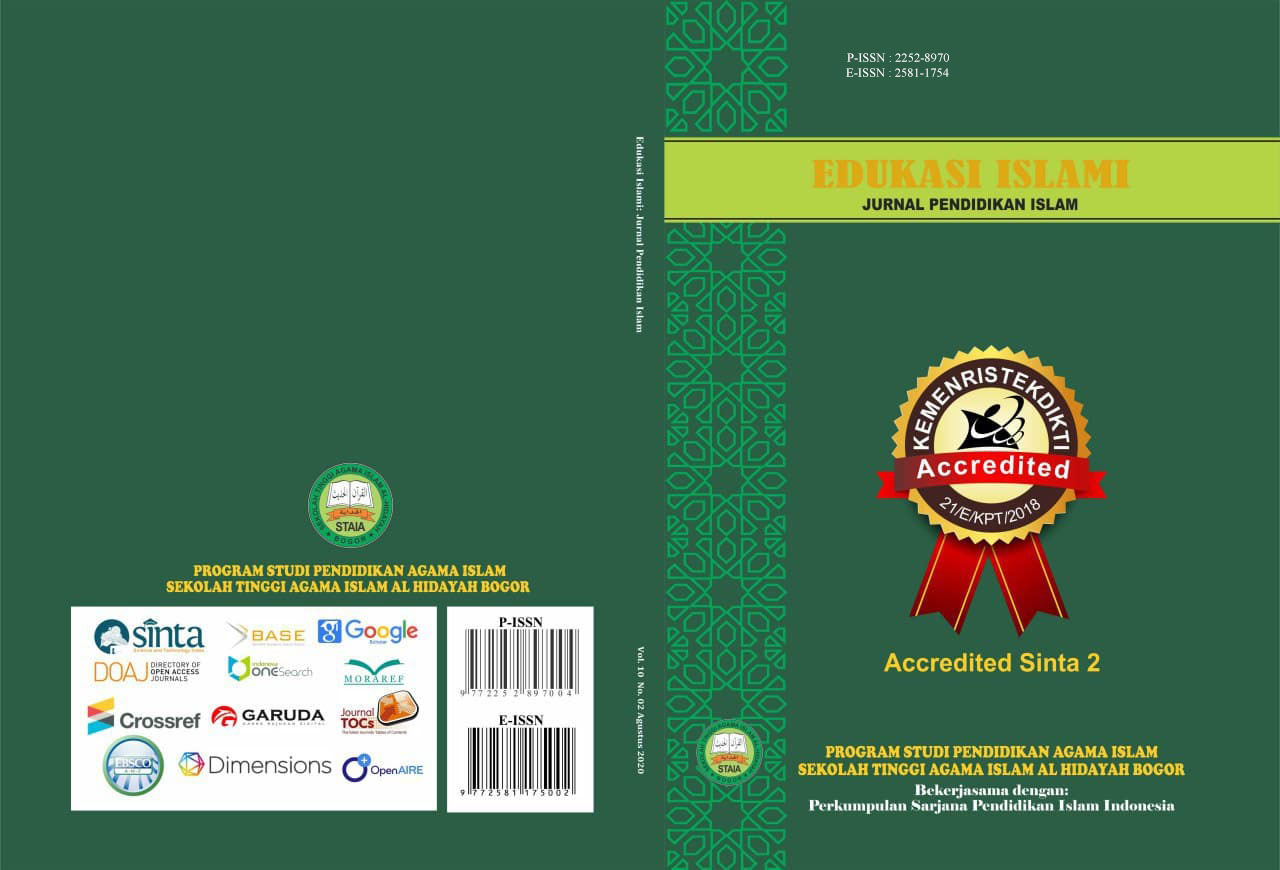Transformation Of Higher Education Marketing Strategy In The Digital Era: Implementation Model at Syekh Abdul Halim Hasan Institute, Binjai City
DOI:
https://doi.org/10.30868/ei.v12i001.7835Keywords:
Marketing Strategy, Competitiveness, Higher EducationAbstract
This study examines the marketing strategies implemented by the Institute Sheikh Abdul Halim Hasan Binjai to improve power competition in the high education sector. This research aims at the application of mixed 4P marketing. Specifically, this study describes 1) the products produced by the Institute Sheikh Abdul Halim Hasan Binjai in improving power competitiveness of higher education, 2) prices offered by the Institute Sheikh Abdul Halim Hasan Binjai in improving power competitiveness of higher education, 3) places provided by the Institute Sheikh Abdul Halim Hasan Binjai in improving power higher education competitiveness, and 4) promotion strategies developed by the Institute Sheikh Abdul Halim Hasan Binjai in improving power higher education competitiveness. With an analysis of how universities develop their academic programs, establish tuition fees, optimize location strategically, and use promotional strategies, this study attempts to uncover the effectiveness of strategy in attracting candidate students and improving power competition. This study uses a qualitative approach, with data collected through structured interviews, observation, and analysis. Documents. Respondents covering stakeholders’ interests include the chairman of the foundation, leadership college high, lecturers, staff education, and students. Data collection and sampling methods snowball used to obtain comprehensive data. Data analysis was carried out using the interactive model of Miles and Huberman, namely data condensation, data presentation, and retrieval conclusion. Triangulation technique applied to validate data and ensure reliability. Findings from the study show that aligning academic programs with market demand, maintaining competitive and affordable tuition fees, choosing strategic campus locations, and integrating traditional and digital promotional strategies significantly contribute to improving the power competitiveness/superiority of the competitive Institute Sheikh Abdul Halim Hasan Binjai. Next, in the adaptation curriculum, collaboration and improvement facilities are very important in maintaining relevance and pulling candidate students. Based on the findings, the Institute Sheikh Abdul Halim Hasan Binjai recommended continuing to increase the curriculum and align it with market and industrial world needs that continue to grow and develop. In addition, it is necessary to further integrate digital marketing strategies to expand reach and maintain power in the increasingly competitive education sector.
References
Abelha, M., Fernandes, S., Mesquita, D., Seabra, F., & Ferreira-Oliveira, A. T. (2020). The Development of Competences in Higher Education: A Theoretical Model. Educational Research Review.
Altbach, P. G., & Knight, J. (2007). The Internationalization of Higher Education: Motivations and Realities. Journal of Studies in International Education.
Armstrong, G., & Kotler, P. (2022). Principles of Marketing (18th Edition). Pearson.
Bugandwa Mungu Akonkwa, D. (2009). Is Market Orientation a Relevant Strategy for Higher Education Institutions? International Journal of Public Sector Management.
Cheung, C. K., et al. (2010). The Importance of Market Segmentation and the 4Ps in Higher Education Marketing. Asia Pacific Journal of Education.
Creswell, J. W. (2012). Educational Research: Planning, Conducting, and Evaluating Quantitative and Qualitative Research. Pearson.
Davies, M. (2017). Competency-Based Education and Student Achievement in Higher Education. Higher Education Research & Development.
Ferrell, O. C., et al. (2022). Marketing Strategy (8th Edition). South-Western College Publishing.
Frey, B. S., et al. (2022). Elasticity of Pricing in Education: A Policy Perspective. Economics of Education Review.
Grosseck, G., Tiru, L. G., & Bran, R. A. (2020). Digital Transformation in Higher Education. Educational Technology & Society.
Hemsley-Brown, J., & Oplatka, I. (2016). Higher Education Consumer Behavior: An International Perspective. Springer.
Jones, K., & McConnell, A. (2023). Adapting to Changing Student Expectations: A Strategic Perspective. Journal of Higher Education Policy and Management.
Kotler, P., & Lee, N. (2007). Marketing in the Public Sector: A Roadmap for Improved Performance. Pearson Prentice Hall.
Kotler, P., & Armstrong, G. (2017). Principles of Marketing (17th Edition). Pearson.
Lovelock, C., & Wirtz, J. (2011). Services Marketing: People, Technology, Strategy. Pearson.
Maghsudi, F., et al. (2021). Curriculum Adaptation in the Era of Technological Advancements. Journal of Curriculum Studies.
Miles, M. B., Huberman, A. M., & Saldaña, J. (2014). Qualitative Data Analysis: A Methods Sourcebook. Sage Publications.
Nair, M., et al. (2023). Digitalization in Higher Education Marketing: Emerging Trends. Educational Technology Research & Development.
Permadi, F. (2022). Competitiveness in Indonesian Higher Education. Journal of Southeast Asian Studies.
Prakhov, I., & Bugakova, P. (2023). The Role of Tuition Pricing in Higher Education Accessibility. Education Economics.
Raheja, P., & Hajela, R. (2021). Leveraging Student Advocacy in Higher Education Marketing. Journal of Marketing for Higher Education.
Sugiyono . (2015). Educational Research Methods : Approach Quantitative , Qualitative , and R&D . Alphabet .
Downloads
Published
Issue
Section
Citation Check
License
Copyright (c) 2023 Maulana Akbar Sanjani, Candra Wijaya, Wahyudin Nur Nasution

This work is licensed under a Creative Commons Attribution 4.0 International License.
Authors who publish with this journal agree to the following terms:
- Authors retain copyright and grant the journal right of first publication with the work simultaneously licensed under a Creative Commons Attribution License that allows others to share the work with an acknowledgment of the work's authorship and initial publication in this journal.
- Authors are able to enter into separate, additional contractual arrangements for the non-exclusive distribution of the journal's published version of the work (e.g., post it to an institutional repository or publish it in a book), with an acknowledgment of its initial publication in this journal.
- Authors are permitted and encouraged to post their work online (e.g., in institutional repositories or on their website) prior to and during the submission process, as it can lead to productive exchanges, as well as earlier and greater citation of published work (See The Effect of Open Access).









